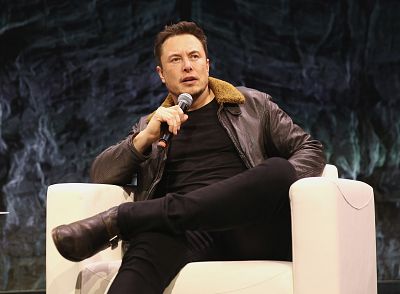Musk's grand tunnel plan is news to many of the regulators who would very likely have to give it approval if it's ever going to see the light of day.
LOS ANGELES — Elon Musk might have lost the battle to build a tunnel below one of the nation's busiest freeways, but he's digging in with a long-term dream to build a subterranean transportation system beneath Los Angeles.
On Wednesday Musk's Boring Company announced it was withdrawing its plans to develop a "test tunnel" beneath Sepulveda Boulevard, which runs parallel to the 405 freeway, as part of a settlement with community groups that sued the city because it exempted the project from normal environmental review requirements.
The Los Angeles City Attorney's office said it was not a party to the settlement. In March an "initial study" on the Sepulveda test tunnel published by the city said the 2.7-mile project would be completed in nine months.
It's not clear how much of it was completed, but Boring has been busy. Last year the city of Hawthorne initially gave the company permission to dig a tunnel from SpaceX's One Rocket Road office to its employee parking garage across the street.
Musk, who lives in Bel Air and who once called his 405 commute south to the city of Hawthorne "soul crushing," tweeted Wednesday, "We're moving forward with a much larger tunnel network under L.A."
Musk's dream of a web of tunnels beneath the region, however, is news to many of the regulators who would very likely have to give it approval if it's ever going to see the light of day.
Officials from the California Department of Transportation, the Los Angeles County Metropolitan Transportation Authority (Metro), and the L.A. County Department of Public Works all said Musk's plans for a tunnel network have not been formally or informally submitted for review or permits.
"No formal plan submitted for a 'Tunneling Network' so far," Metro spokesman Rick Jager said via email.
Neonika Walker, community engagement manager for Los Angeles County Public Works, said even if such a large-scale project didn't appear to touch county property, including buildings, county roads and flood control right-of-ways, planners should probably check in with the county "just to make sure they're not encroaching on our jurisdiction."
This did happen with Boring Company's Sepulveda test tunnel proposal about a year ago, she said, and Boring Company was rejected for a permit.
It's not clear if that was a contributing factor in the demise of Musk's most publicized tunneling project so far, but as early as August there were indications that this particular experiment was not long for this world, especially as the Boring Company began to focus on a new proposal to build a transportation tunnel to Dodger Stadium.
A company answer to a question on its website from August 16, since scrubbed, stated, "The Boring Company has made technical progress much faster than expected and has decided to make its first tunnel in Los Angeles an operational one, hence Dugout Loop!"
This new proposal would create a three mile route from Los Feliz, East Hollywood or Rampart Village to Dodger Stadium. The tunnel would utilize Boring's "electric skate" concept, explained by Mike Thompson, the company's principal geologist, during a public meeting on the Dodger tunnel in August.
"Each electric skate can carry up to 16 passengers," he said. "They're battery operated, and are, basically, based off of modified Tesla Model X chassis. The great thing about Loop is that they're high speed and can travel at up to 150 miles per hour."
This "Loop" concept would involve either ramps or "Loop Lifts" to take passengers to tunnel level and whisk them away on modified Teslas.
The idea has raised eyebrows in the transportation world, but the Boring Company has has some success persuading governments in Los Angeles and Chicago, where it's working on the "Chicago Express Loop," that this future is near.
Boring has demonstrated that it can dig big round holes — and a public showing of a tunnel in Hawthorne was scheduled for Dec. 10 — but it has not demonstrated the viability of its "electric skate" concept beyond a YouTube video and slideshows at public meetings.
The Dugout Loop would initially be limited to 1,400 round trip bookings per game day, which would only amount to about 2.5 percent of home game attendees, according to a city analysis. And there are concerns that even at that, the Loop's ingress and egress points would create their own traffic as travelers vie to get in the tunnel.
Juan Mutate, deputy director of the UCLA Institute of Transportation Studies, said a Loop system under L.A. "would create a lot of car congestion at the stations where you get on these skates."
In other words, this could be a solution that creates another problem.
"We'll have a lot more info if and when the Dugout Loop or whatever first tunnel is constructed," Mutate said.












